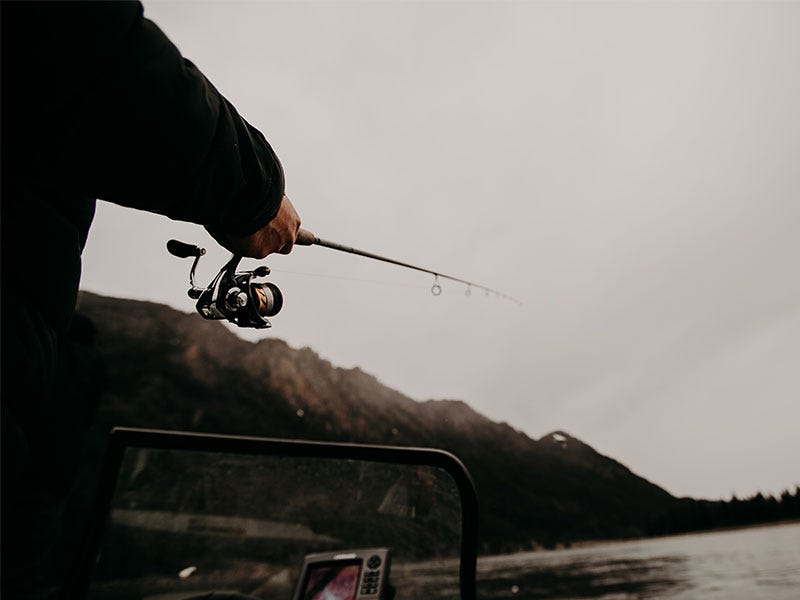How to Jig for Walleye?

We’ll just state the obvious. Fishing for walleye is just plain fun. Thrilling and fast-paced, catching walleye means an angler has to be quick-thinking when it comes to fishing this predator. That’s why we asked walleye expert, Dale Gilbert, to share his extensive walleye knowledge with us. A walleye master, Dale, has fished walleye from Arkansas to Canada and Michigan to Montana, and he doesn’t disappoint.
Jigging for walleye begins with the right gear. In this link, walleye expert, Dale Gilbert, explains the rods and jigs he uses and how to tie palomar knots to catch walleye.
Video Transcription
How to Jig for Walleye
Hey folks. This is Dale Gilbert. We're going to talk a little bit about getting set up to do a little jigging for Walleyes, and we’re over here at Noxon Reservoir today. It's a beautiful day. We just got to find a few fish. First of all, starting out, they've got a really good quality graphite spinning rod. This is actually a 6'3 extra fast, medium power rod. It's my favorite, absolute favorite for jigging. 6'3, it just, anything longer than that, it seems to start losing sensitivity, and I don’t like them any shorter, so it's my absolute favorite. Then I've got a president Pflueger reel on here, which got a real smooth drag.
You can see how it is, and I've got Berkeley tracer, six pound tracer right on there, and you'll notice that what I got set up here, is I actually have a little barrel swivel, a little bead, and then I've got a little fluorocarbon leader here that's about, well it's almost three feet. I'm going to tie this up today with a little Fintech nuckle ball jig. It's one of my favorite jigs for fishing. It's kind of a stand up, head design. I'm gonna tie it up with a palomar knot, so I kind of put the line through the line, tie, put it back through there again. Create a little bit of a loop, kind of like do an overhand knot, like you're gonna tie your shoe.
You got an overhand knot, kinda take the little loop, moist a little bit so you don't build up any friction. Go ahead and put the whole bait back through that loop and then pull everything up tight. This works really, really, really good with the fire line and works, actually, with any line. The palomar knot, as far as break strength, is one of the best knots there are, and it's pretty easy to tie. So I've got our jig set up here. Now the next thing I want to do is I'm going to grab a piece of Gulp because I like to do a lot of fishing with a gulp minnows, so I'm going to dig out a Berkeley Gulp alive, a four-inch watermelon pearl.
It's one of my favorite colors. Kind of looks just like a little minnow. Kind of see, it's got a little bit of a, almost a blueish hue of blueish-green hue to it here, like this, which is really, for some reason, just seem to like it pretty well. So we'll take this four-inch Berkeley crawler and with a fintech nuckle ball jig, you rig these a little bit different than you would, otherwise, with most other jigs. I'll start and put the barb or the point of the hook about an eighth of an inch behind its nose and just run it in the about what the hook gap is.
So it comes out about like so, and then I'll push it up to the bait keeper that's on that jig, turn it sideways, push the head up inside and I'll pitch it and turn it back so that when it gets all said and done, I basically end up with the nose of that bait right up in that little cavity with as much hook gap as I can get exposed. I've got this thing, looks like a little bit of a minnow. I'm ready to go catch fish. Even with this, typically I'll take about a one inch piece of crawler like this and I'll piggyback at just take and nose hook it there, maybe inch, maybe an inch and a half. I'll set it up just like this right here. That thing right there catches me a whole lot of walleyes. All right, time to go catch fish.
Thanks for watching. If you have any further questions on walleye fishing, please come visit us at any of our retail locations or North40.com.
